Is Painting Stucco Worth It? See All the Pros And Cons
Stucco is a typical exterior finish for houses in hot, dry climates, particularly in the U.S. Southwest region, because of its ability to enclose warmth or coolness during the changing seasons. It provides excellent durability and has a long life with proper care and maintenance due to its materials.
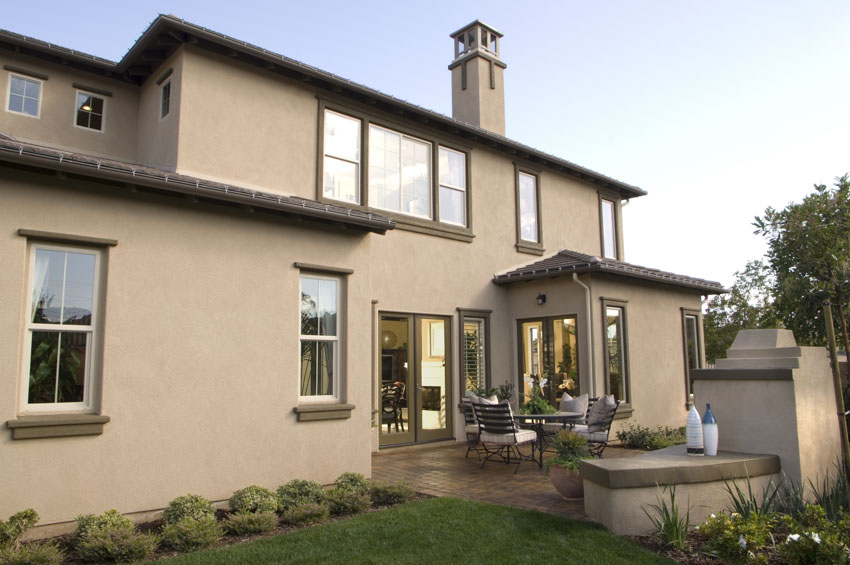
This finish is made of a combination of powdered limestone or cement blended with sand and water. When applied wet, it cures to a hard and very dense masonry surface; used as an interior decorative coating for walls and ceilings, and external structural siding.
Can You Paint A Stucco Exterior?
After some time, when it appears dirty and drab, painting stucco is a great idea to give it a fresh look. It is recommended best to apply a fresh coat every five to seven years to provide you with the advantage of staying ahead of costly repairs. However, avoid painting a new stucco before it sets since there is a big chance of trapping moisture beneath the layer of paint, which will lead to unsightly blistering, peeling, and can cause mold to grow behind the surface.
Keep in mind that it is incredibly porous and takes longer to dry. It is advisable to wait at least sixty days to allow the finish to cure and harden up before painting fully. It tends to absorb moisture readily; that is why you need to apply many coats. In severe humid climates, when painting a stucco house, you must make sure to let each coat dry completely before applying the next coat. Not doing so can drastically decrease the longevity of stucco.
Painting it on the different parts of a house exterior needs special attention and maintenance. It needs to be scraped, cleaned, primed and repainted every few years. You get the best results when painting it, which requires a time commitment and knowledge of the proper process.
Pros Of Painting Exterior Stucco
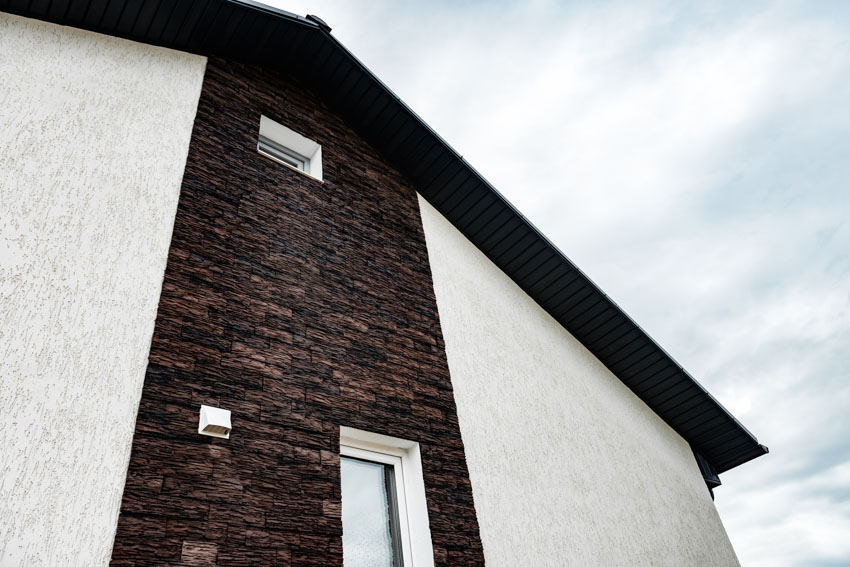
Seals the Stucco Surface – Painting it with the right coating keeps the wall surface dry, seals out moisture, and ensures that your wall stays waterproof.
Looks More Attractive – It will also give your home an attractive appearance for many years.
Hides Imperfections – Painting stucco walls can hide water and rust stains, making them hardly noticeable.
Helps Prevent Fading – Since it is prevalent in a hot and sunny climate, blazing U.V. rays from the sun can cause your home’s exterior to fade.
Protects the Surfaces – It also reduces the durability of the exterior finish, leading to structural damage such as peeling and cracking in masonry. Painting it helps protect walls by deflecting damaging U.V. rays.
Hides Cracks – Although filling cracks with putty, caulk, or other material will prevent moisture from entering the material. Hairline cracks can be covered with unique exterior painting systems for the finish to make it even more weather-resistant.
Helps Home’s Resale Value – Painting it will provide a better curb appeal if you put your house on the market. If you want to keep your home looking new, a fresh coat will certainly enhance the aesthetic appeal of your home.
Cons Of Painting Exterior Stucco
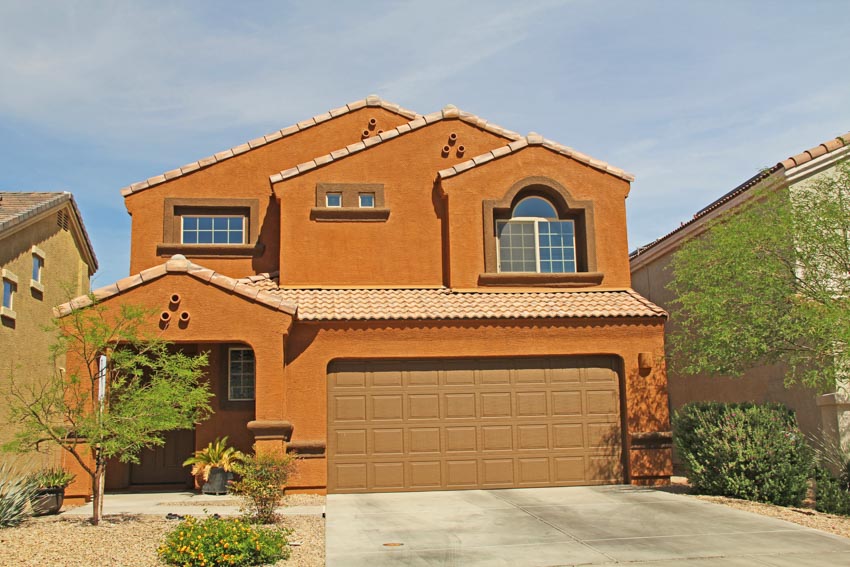
Not Recommended for Wet Environments – This finish doesn’t do very well in a wet environment because it tends to become over-soaked with water and can lead to the building materials beneath getting saturated over time.
Can Increase Potential Repair Costs – While painting this finish can be a low-cost option, in the future, it can increase repair costs because a painted surface must be completely stripped off before applying new coatings.
Need Special Primers – You need to sandblast the surface to strip off the paint, which can be very costly. More so, after stripping, the underlying layer needs to be coated with special primers before additional coatings can be applied.
Waiting Time Before Paint Application – Another disadvantage is the waiting period for the material to be ready for painting, and it requires a minimum of 28 days for the stucco to dry before it is prepared for painting. Doing so permits the risk of bubbling and peeling.
Cost To Paint A Stucco House
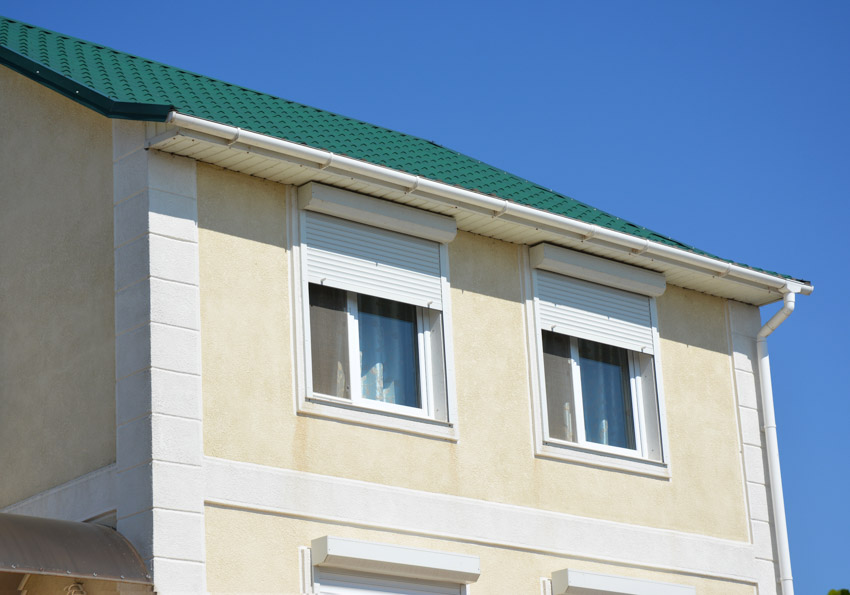
The average cost to stucco a house that’s around 2,000 square feet is $4,500.00 and as high as $7,200.00 for larger houses, while smaller houses would cost as low as $3,600.00. You may need to factor in pressure washing which would cost somewhere between $1.80 and $3.60 per square foot.
An estimate of 10 to 20 gallons of acrylic paint is required to cover a 2,000 square foot house; this would cost between $300 to $1,600 for two coats of acrylic paint.
For two coats of elastomeric paint, you will need 40 to 60 gallons and would cost between $1,200 to $3,600. Keep in mind that elastomeric paint is more expensive than acrylic paint and would require an experienced painter.
Take into consideration that some houses need pressure washing before painting can occur. Preparation requires removing loose paint, spot prime, and caulk edges, gaps. It would cost between $163 and $389 per square foot and includes planning, equipment and material acquisition, area preparation and protection, setup, two coats of paint, and cleanup.
Other related materials and supplies needed include masking tape and paper, surface repair material, solvents, and cleanup supplies; the cost would be between $9 and $10 per square foot.
These estimates are for qualified professionals’ essential work using mid-grade materials in good condition. Actual costs will depend on job size, weather conditions, the number of cracks and repairs needed, and whether the stucco is painted or bare.
How To Paint Stucco
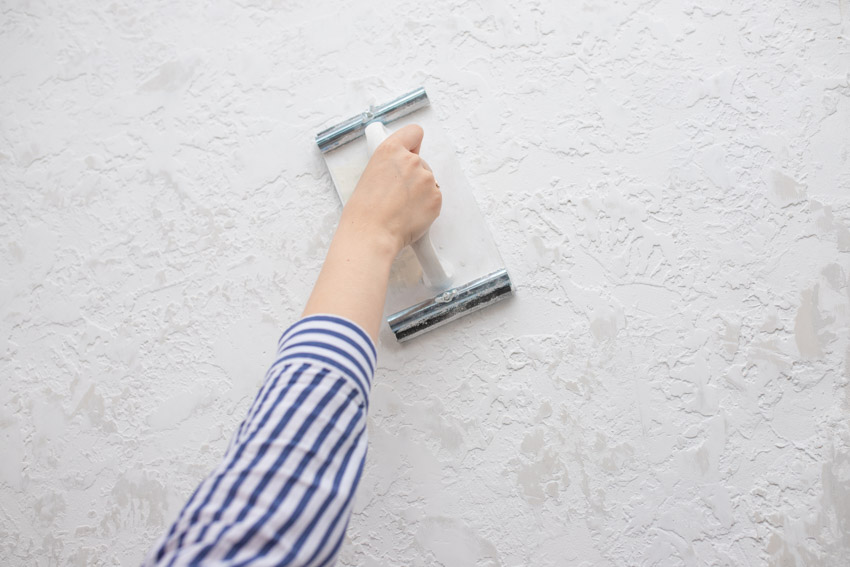
Do I need to prime the stucco before painting? If your house is made of stucco, painting it will refresh the look of your home. To achieve a DIY painting job that looks like it was done by a professional, follow these guidelines for painting the material.
Step 1: Inspect the house and check the condition. If you notice some hairline cracks, these are normal, and they will be filled and hidden once you apply paint. Other common cracks might show coming off the corners of windows and doors that run toward the ground and can be easily repaired.
The main thing that we recommend holding off painting is when you see horizontal cracks, large pieces missing, or unusual discoloration. It may be best to let a contractor take a look to assess the causes because it may be a sign of more severe issues like moisture behind the stucco.
Step 2: If there are no severe issues, you may prepare the surrounding area by placing drop cloths on the floor, and tape trims—clean surfaces of dirt and dust by going over with a stiff brush or push broom.
If there is evidence of grease, grime, or mildew build-up, apply an eco-friendly, mild cleaner or detergent on your walls. Deeply grooved surfaces can be power washed to get the dirt out of the crevices.
Be sure to use the lowest pressure and thoroughly rinse the material before allowing it to dry before you begin to caulk and repair it for painting.
Step 3: Preparing the stucco for painting requires fixing any small cracks with masonry caulk. Cracks that are larger than 1/16-inch-wide can be repaired with a patch. Loose stucco can be removed by a putty knife and fixed with a patching compound.
If you have previously painted the material and the paint has some chipped area, remove any loose paint by lightly sanding the edges of the chipped areas with 80- or 100-grit sandpaper.
Do watch out for evidence of water leaking from a gutter, and this may be seen as discoloration or deterioration. You may need to check if water has gotten behind and then repair the leak from the gutter before you start painting.
Step 4: The stucco should be primed with a high-quality acrylic primer. Best to use an acrylic latex block filler – we recommend Benjamin Moore block fillers. Use a synthetic brush to cut in and a large, napped roller to roll the primer.
Since this material is absorbent, an acrylic latex block filler will soak into all the nooks and crannies and allow maximum coverage out of your topcoat. It is best to apply two thinner coats than one thick coat and make sure to follow the manufacturer’s directions for application and drying times between coats.
Step 5: Once the primer has dried, you are now ready to apply the paint. Keep in mind that the texture has a much greater overall surface area than a flat wall and may need to double on what the gallon of paint says it gives you coverage.
You need to first cut in around the windows, doors, and other trim with a synthetic brush when applying paint. Next is to use a large, thick-napped roller for rolling paint on the walls.
It is best to start at the top and work in small sections. You may roll on one to two coats, but a single topcoat will be enough since you primed the walls.
You may also use an airless sprayer as an alternative if even a thick nap roller cannot reach the deepest parts of the stucco, and if it has a prominent texture, you can go over the paint with a roller after spraying.
This technique is known as back-rolling, which makes an enormous difference since it gives a more uniform appearance, better blends the paint, and minimizes the appearance of hard lines. And so, there you have five simple steps on how you can paint your stucco home.
What Type Of Exterior Paint Finish Is Best For Stucco

It is best to use a flat sheen finish, apply at least two coats of paint, and apply an airless sprayer finishing off with a medium nap roller. Deciding on the best exterior paint is choosing to use either acrylic latex or elastomeric paint.
A 100% acrylic paint is the best exterior option since it is durable and flexible. And because this material becomes a hard but porous surface, acrylic latex paint can allow the surface to breathe better because of its penetrability.
This characteristic of acrylic allows moisture to escape freely and evaporate. Not only are acrylic paints the most affordable option when painting exterior stucco, but it is also easy to apply, clean up, and recoat.
On the other hand, painting your exterior stucco with elastomeric paint can be a viable choice for your home as well. Elastomeric paint is a special rubberized paint thicker and more water-resistant than acrylic exterior paint.
Applying elastomeric paint has the advantage of bonding the hairline cracks in stucco and removing them altogether.
Elastomeric paint prevents moisture build-up and is best recommended for homes in areas of high humidity or frequent rain. Another benefit of using elastomeric paint for these exterior walls will last 3-7 years longer than acrylic.
Best Paint For Stucco

For stucco homes in the U.S. Southwest, such as in Los Angeles, San Diego, Las Vegas, Phoenix, and Tucson, Dunn-Edwards Improved Performance Evershield® is the best seller of paint because it specializes in manufacturing paints for sunshine-drenched homes.
Popular exterior color options that are available from Dunn-Edwards in 2020 include Stonish Beige (LRV 44), Trail Dust (LRV 40), Wooded Acre (LRV 33), Wooden Peg (LRV 31), and Cottage White (LRV 30). Go for high LRV exterior colors if you live in a hot climate and want to reflect light away from the home to keep it cooler. The higher the LRV the lighter the color.
A home made of mostly stone can be paired excellently for a cohesive façade such as B.M. Briarwood or SW Mega Greige. It will give your home the warmth of stone with an earthly shade of color.
One of the best exterior colors for homeowners who prefer white to beige is S.W. Snowbound or S.W. Original White. However, if white is not your style, S.W. Neutral Ground offers a light neutral shade for an indistinct color preference.
Another classic color is blue if you want a more vivid effect on your stucco, such as the fresh and clean feel of B.M. Nimbus Gray. This color can help highlight other architectural details of your home when painted white.
Classic color combinations that can stand out and offer a historic feel for a French Provincial style – B.M. Flawless is a classic cream yellow appropriate for a Classic Colonial architectural design.
Speaking of history, gray is timeless and has a deep history of being a popular choice for exterior wall finishing color. BM Coventry Gray makes a striking statement against crisp, white color trim.
How Often Should Stucco Be Painted?
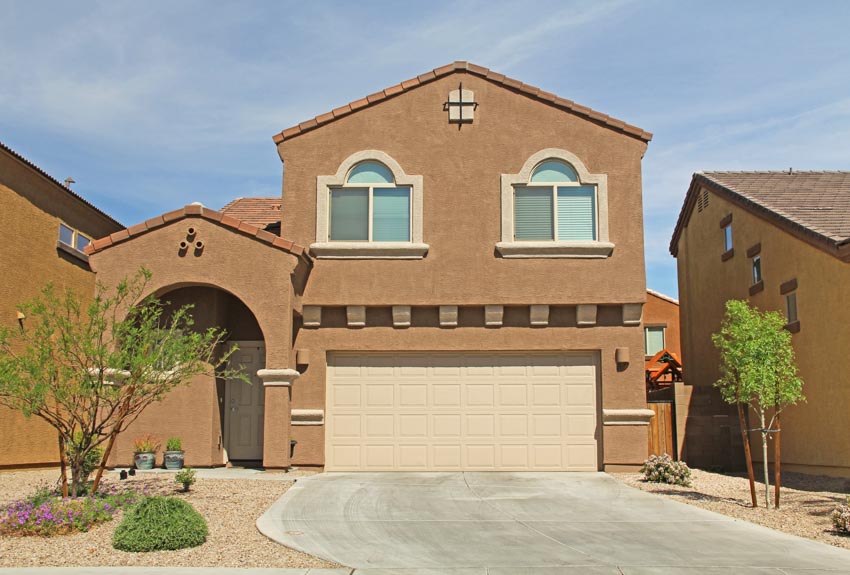
Stucco is both durable and great-looking exterior finish and ideally should be repainted every five to ten years when done right and maintained well.
Many pros and cons contribute to how long the paint job should last, including the quality of paint used and how the color accounts for sunlight exposure, the preparation process of painting and repair, and the weather conditions.
However, you may also need to evaluate the stucco paint job every five years to keep it fresh and prevent hairline cracks from spreading and growing bigger. The stucco lifespan of 5 to 10 years is about the same as the exterior siding. Read more about house siding vs stucco here.

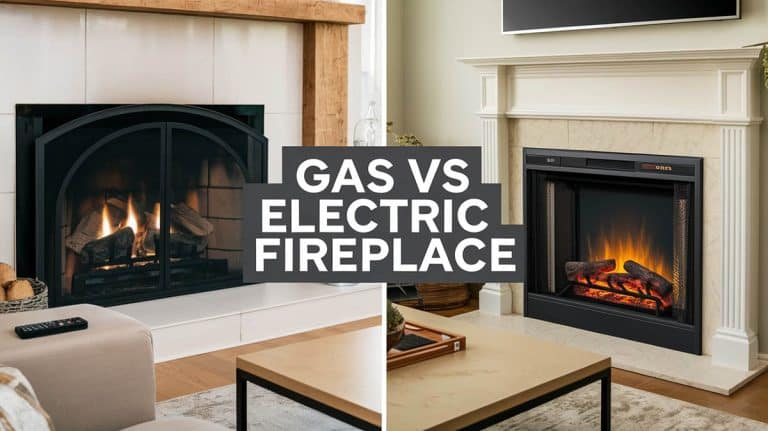
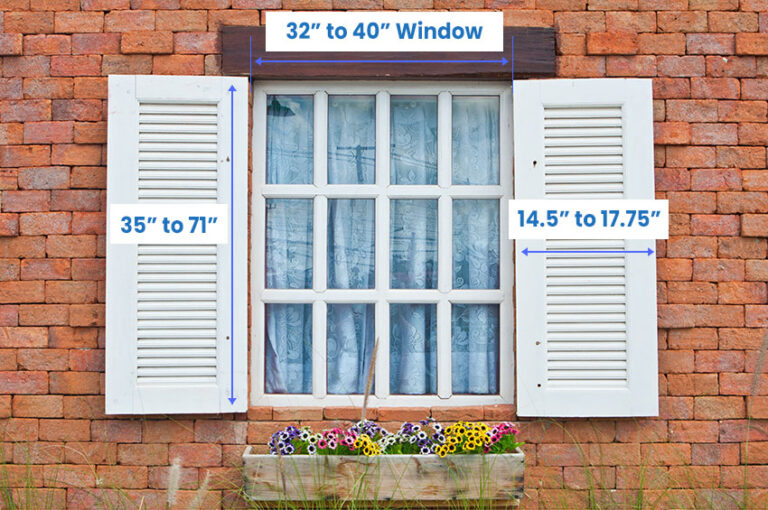
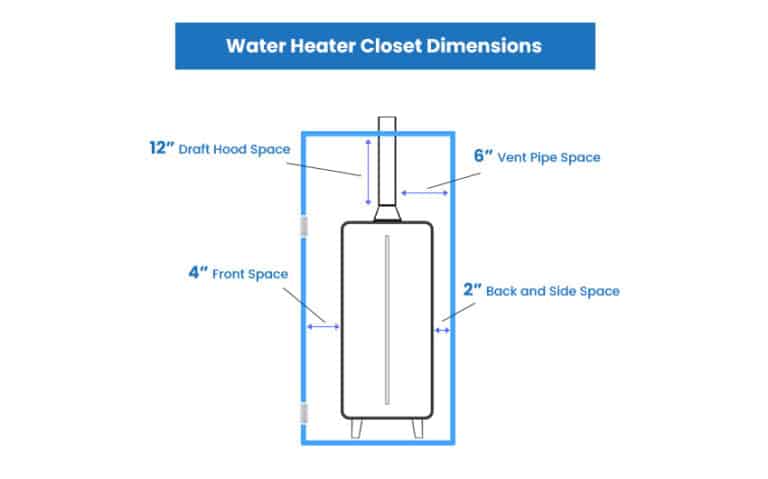
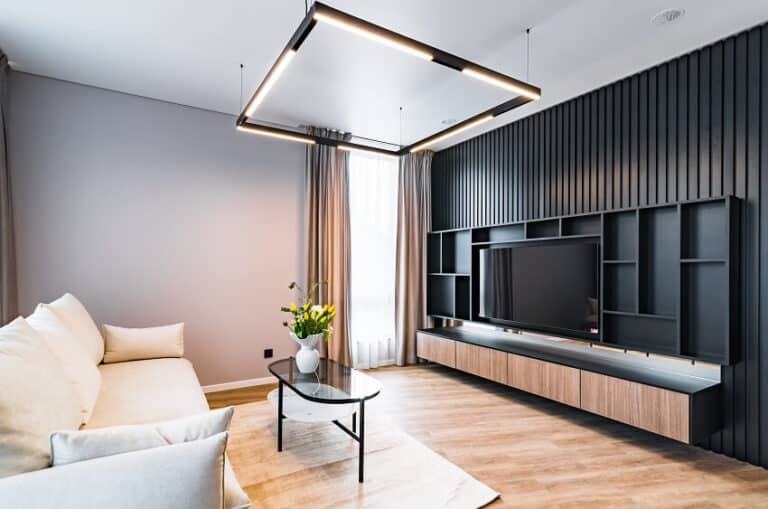
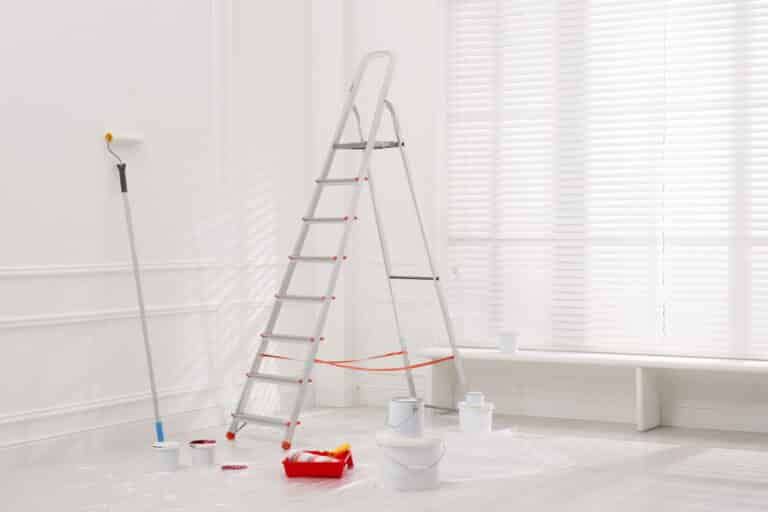
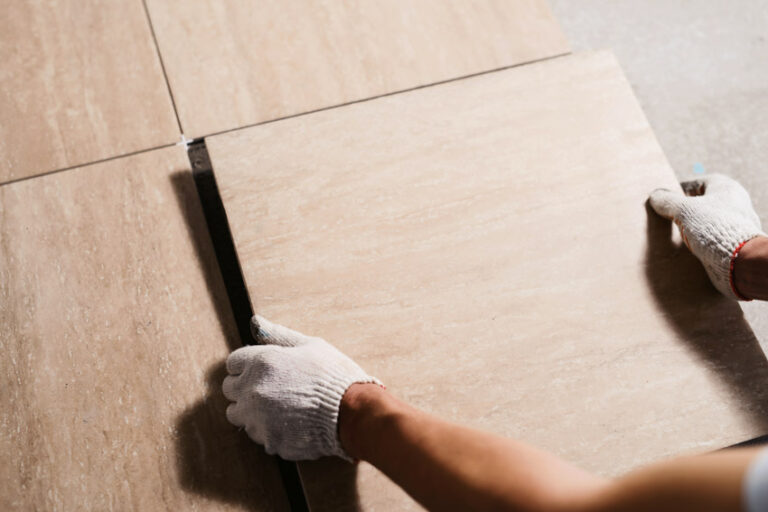
I started to paint my stucco using acrylic paint and a roller. No thanks, its taking forever! I have to buy a paint sprayer to finish the job.